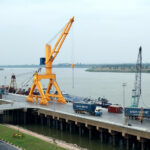Red Cross
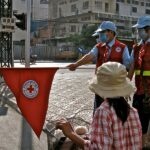
The Cambodia Red Cross (CRC) is the principal humanitarian society in Cambodia. The government has designated it as an auxiliary to public bodies offering humanitarian assistance. In addition to the national headquarters, the CRC has 25 branches.1 CRC was founded in 1955 and has worked ...
Extractive industries
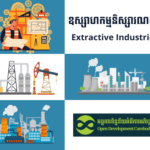
Extractive industries include mining and mineral sectors, natural gas and oil exploration, petroleum refineries, and quarrying for construction resources such as sand, stone, and gravel. Cambodia’s extractive resources have gone largely untapped, while these resources are geographically identifiable. French and Chinese geologists have been indicated ...
Court monitoring
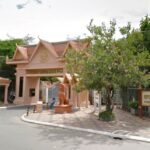
Respect for strong values is the key to citizens’ trust in their courts.121 The international values recognized for judges are independence and impartiality, integrity, equality of treatment, diligence and competence. A judge cannot both decide a case and have a personal interest in its resolution. ...
Disaster and emergency response funding
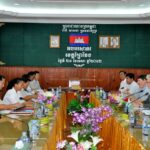
Cambodia has begun to integrate disaster and climate resilience goals into its national policies but implementation remains difficult. In the National Action Plan for Disaster Risk Reduction 2014–2018, the government prioritizes the target to: “build a resilient nation and local communities to pursue sustainable development.” ...
SDG 2 Zero hunger
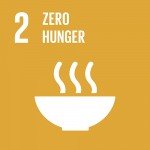
Sustainable Development Goal 2 (SDG 2) seeks to “end hunger, achieve food security and improved nutrition and promote sustainable agriculture”, ensuring universal access to safe, nutritious and sufficient food for everyone at all times. Likewise, it provides a much more comprehensive approach to the issue ...
Mitigation
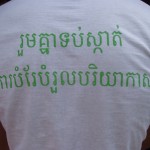
Together, fighting climate change. Photo by 350.org, taken on 12 October 2010. Licensed under CC BY-NC-SA 2.0.Clean Development MechanismThe Clean Development Mechanism (CDM), defined in Article 12 of the Kyoto Protocol, allows a country with an emission-reduction or emission-limitation commitment under the Kyoto Protocol to ...
Water pollution

Young child drinks clean water in Cambodia. Photo by Cecilia Snyder, taken on 12 July 2003. Licensed under CC BY-NC-ND 2.0Water pollution can be defined in many different ways. Basically, it is the contamination of water when pollutants are discharged into water bodies without treatment ...
Terms and definitions
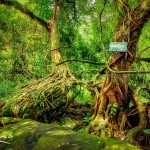
Defining and measuring forests is not an easy business. Definitions that initially sound very similar can turn out to have crucial differences. Understanding the terms is important for understanding forest use, forest cover, forest laws and policies and deforestation. ...
Primary school
Cambodia’s education system is structured into a 6+3+3 formula -students spend their first 6 years in primary school (grades 1–6), followed by 3 years in secondary school (grades 7–9) and 3 years in high school (grades 10–12) before sitting the diploma examination.295 Cambodian students are ...
Cambodia’s agriculture sector amid COVID-19
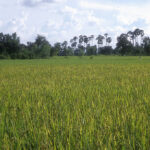
Agriculture has been considered as the backbone of the national economy. Of the total population, 76% were living in rural areas and agriculture provided 31.2% of total employment and contributed 20.7% to Gross Domestic Product (GDP) in 2019.347 However, the global pandemic caused by COVID-19 ...
Non-renewable energy production
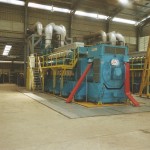
Non-renewable energy sources are chiefly fossil fuels such as coal, diesel, oil and gas. They provide most of Cambodia’s locally-produced electrical supply – in 2011 diesel and heavy fuel oil generators provided 89% of local electricity generation. ...
Forest protection

Deforestation has always been a problem in Cambodia since the 1970s, and it has aggravated inthe last decade. Some protected areas have been deforested. Between 2001 and 2018, Cambodia had lost 557,000 hectares (11.7%) of forest cover in protected areas.397 This loss has had an ...
Small and Medium Enterprises (SMEs) information toolkit

RationalIn 2018, the total number of registered Small and Medium Enterprises (SMEs) was 155,745. More than 90 percent of registered firms in Cambodia are SMEs. However, despite being vital to the socio-economy, 95 percent are not registered yet. By 2025, 80% and 95% of small and ...
Agricultural production

Rice field in Cambodia’s countryside. Photo by fmpgoh, taken on 15 July 2009. Licensed under CC BY-NC-ND 2.0The main products from the agriculture sector are rice, rubber, corn, vegetables, cashews and cassava. Unprocessed agricultural exports were projected to be more than 90 percent of total agricultural ...
Civil status
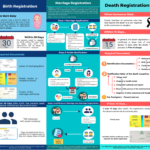
Cambodia has one of the youngest and fastest-growing populations in Southeast Asia, with a population of approximately 16 million in 2019.492 According to the World Bank, the country’s birth rate per 1,000 people decreased slightly, from 25.5 in 2010 to 22.4 in 2018.493 With economic growth ...
Commune/Sangkat administration
Civil StatusCambodia has one of the youngest and fastest-growing populations in Southeast Asia, with a population of approximately 16 million in 2019.508 According to the World Bank, the country’s birth rate per 1,000 people decreased slightly, from 25.5 in 2010 to 22.4 in 2018.509 With economic ...
GIS training for improved natural resources management in Cambodia

The fundamental GIS training was successfully conducted at ODC office, Phnom Penh, from 03 to 05 February 2020. A number of civil society organizations have been invited to join this three-day training. Those organizations include Build Community Voice (BCV), People Center for Development and Peace ...
Private non-profit development assistance
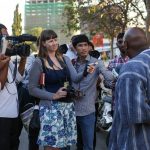
Maina Kiai speaking with journalists outside the Ministry of Foreign Affairs in Phnom Penh. Photo by Maina Kiai, taken on 6 February 2014. Licensed under CC BY 2.0The first humanitarian international non-governmental organizations arrived in 1989. After the 1993 election, more and more internal organizations ...
Data Literacy Training 2020
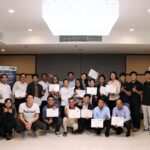
On the morning of September 8th 2020, at Poulowai hotel based in Phnom Penh, Open Development Cambodia(ODC) hosted “2020 Basic Data Literacy Training on social accountability”. This three-day training is under the project Innovation for Social Accountability in Cambodia (ISAC) having ODC and FHI 360 ...


